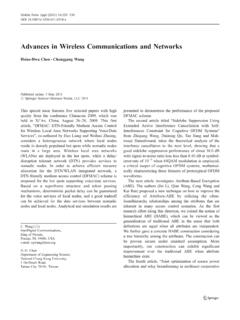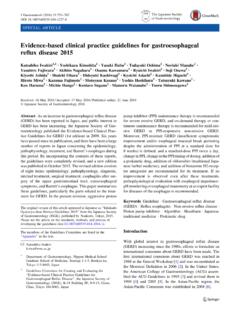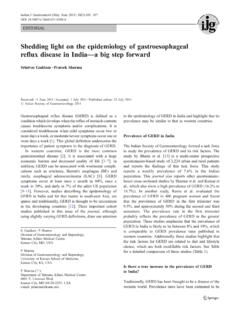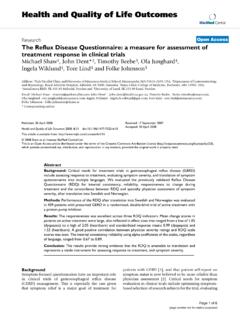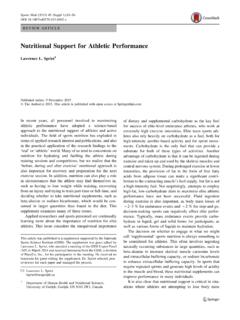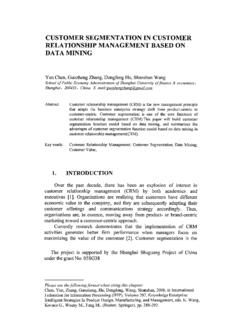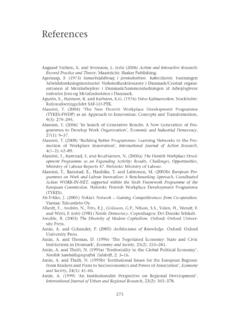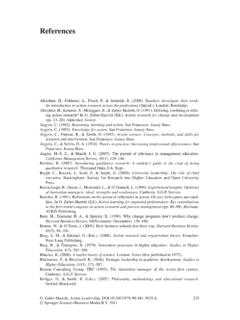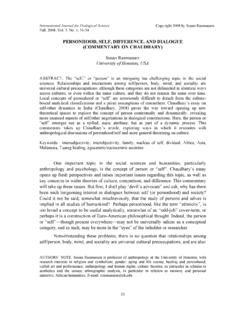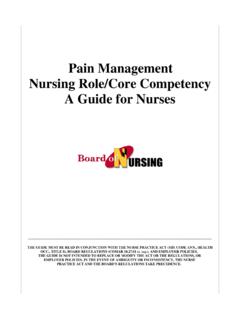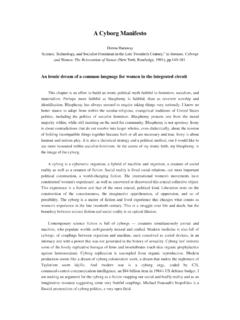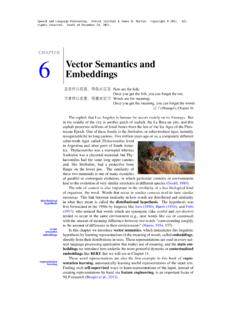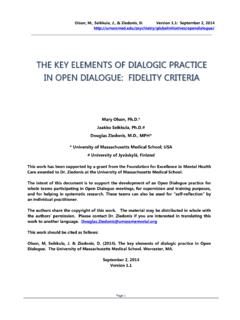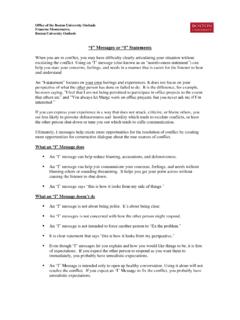Transcription of Intrinsic Motivation and Self-Determination in Human Behavior
1 Intrinsic Motivation and Self-Determination in Human Behavior PERSPECTIVES IN SOCIAL PSYCHOLOGY. A Series of Texts and Monographs Edited by Elliot Aronson Intrinsic Motivation . By Edward L. Oed SCHOOL DESEGREGATION. By Harold B. Gerard and Norman Miller Human AGGRESSION. By Robert A. Baron UNIQUENESS: The Human Pursuit of Difference By C. R. Snyder and Howard L. Fromkin SCHOOL DESEGREGATION: Past, Present, and Future Edited by Walter G. Stephan and Joe R. Feagin THE BELIEF IN A JUST WORLD: A Fundamental Delusion By Melvin J. Lerner NONVERBAL Behavior AND SOCIAL PSYCHOLOGY. By Richard Heslin and Miles Patterson Intrinsic Motivation AND Self-Determination IN Human Behavior . By Edward L. Oed and Richard M. Ryan THE PHYSICAL ATTRACTIVENESS PHENOMENA. By Gordon L. Patzer REDEFINING SOCIAL PROBLEMS. Edited by Edward Seidman and Julian Rappaport A Continuation Order Plan is available for this series.
2 A continuation order will bring delivery of each new volume immediately upon publication. Volumes are billed only upon actual shipment. For further information please contact the publisher. Intrinsic Motivation and Self-Determination in Human Behavior Edward L. Deci and Richard M. Ryan University of Rochester Rochester, New York SPRINGER SCIENCE+BUSINESS MEDIA. LLC. library of Congress Cataloging in Publication Data Oed, Edward L. Intrinsic Motivation and self determination in Human Behavior . (Perspectives in social psychology). Bibliography: p. Includes index. 1. Intrinsic Motivation . 2. Psychology-Philosophy. 3. Personality. I. Ryan, Richard M. ll. Title. III. Title: self determination in Human Behavior . IV. Series. 1985 85 12413. ISBN 978-1-4899-2273-1 ISBN 978-1-4899-2271-7 (eBook). DOI 10987654. 1985 Springer Science+Business Media New York Originally published by Plenum Press, New York in 1985.
3 Softcover reprint of the hardcover 1st edition 1985. All rights reserved No part of this book may be reproduced, stored in a retrieval system, or transmitted, in any form or by any means, electronic, mechanical, photocopying, microfilming, recording, or otherwise, without written permission from the Publisher To Our Parents: Janice M. and Charles H. Oed Jean M. and C. James Ryan Preface Early in this century, most empirically oriented psychologists believed that all Motivation was based in the physiology of a set of non-nervous- system tissue needs. The theories of that era reflected this belief and used it in an attempt to explain an increasing number of phenomena. It was not until the 1950s that it became irrefutably clear that much of Human Motivation is based not in these drives, but rather in a set of innate psychological needs. Their physiological basis is less understood.
4 And as concepts, these needs lend themselves more easily to psycho- logical than to physiological theorizing. The convergence of evidence from a variety of scholarly efforts suggests that there are three such needs: Self-Determination , competence, and interpersonal relatedness. This book is primarily about Self-Determination and competence (with particular emphasis on the former), and about the processes and structures that relate to these needs. The need for interpersonal relat- edness, while no less important, remains to be explored, and the findings from those explorations will need to be integrated with the present theory to develop a broad, organismic theory of Human Motivation . Thus far, we have articulated Self-Determination theory, which is offered as a working theory-a theory in the making. To stimulate the research that will allow it to evolve further, we have stated Self-Determination theory in the form of minitheories that relate to more circumscribed domains, and we have developed paradigms for testing predictions from the various minitheories.
5 In working toward a broad Motivation theory, we hope to contribute to the accelerating movement toward a motivational analysis of Human functioning. For the past several years, theorists have been increasingly turning to motivational variables as central explanatory concepts in order to explain phenomena that were not well handled by previous theories that focused exclusively on behavioral or cognitive variables. vii viii PREFACE. Our goal is to develop a truly organismic theory within empirical psychology. By assuming Human agency ( , an active organism), by exploring the needs, processes, and structures that relate to it, and by exploring both the possibilities for and the limitations to Human agency, we are attempting to explicate the dialectic of the organism's acting on and being acted upon by the social and physical environments. Since metatheories can be judged in part by the coherence and empirical utility of the theories that are built upon their foundation, we have tried to develop a theoretical framework that would give credence to this phil- osophical perspective.
6 Finally, our overriding, sociopolitical interest is_examining the pos- sibilities and obstacles for Human freedom. In our thinking, this pertains not only to social, political, and economic structures, but also to internal psychological structures that reflect and anchor the external ones. It is our hope that, by engaging in a serious investigation of motivational issues, we can make some small contribution toward the larger goal of Human freedom. Preparation of this book, along with some of the research described in it, was supported by a grant from the National Science Foundation (BNS 8018628) and by the Xerox Corporation, through the efforts of John W. Robinson. The Department of Psychology at the University of Roch- ester has also supported our efforts. We are deeply indebted to all three organizations for helping to make this project possible. For the past few years, we have been working to create the Human Motivation Program at the University of Rochester.
7 Through the jux- taposition of scholars interested in Motivation from the divergent view- points of social, developmental, personality, and clinical psychology, we have been able to stimulate dialogue, to facilitate research and schol- arship, and to provide doctoral training in Motivation as it relates to those basic areas and to their applied ramifications. Much of the work presented in this book has been done in collaboration with other people affiliated with the Human Motivation Program. In particular, James P. Connell has worked closely with us in developing the theory of inter- nalization that appears in Chapters 5 and 9. We are indebted to Jim as well as to other faculty members in the Department of Psychology with whom we have collaborated, and we are grateful to all of the graduate students who have contributed to the research effort. We would espe- cially like to acknowledge the significant empirical contributions of Wendy Grolnick, Richard Koestner, and Robert Plant.
8 In addition, we express our appreciation for the efforts of our colleagues at other universities who have contributed greatly toward an explication of the issues raised in this book. Robert J. Vallerand made comments on several chapters PREFACE ix of the book, and Elliot Aronson has been an important source of moral support. We thank both of them. Betsy Whitehead did a heroic job of typing and editing the manu- script. Not only did she continually retype to keep up with our rewriting and with new word processing systems, but she continually spotted errors and inconsistencies in construction and content. We thank Betsy, and we also thank Cathy Ward and Shirley Tracey for their clerical assistance. EDWARD L. DECI. RICHARD M. RYAN. Contents PART I: BACKGROUND. 1. An Introduction .. 3. Motivation Theories .. 3. Drive Theories .. 4. Intrinsic Motivation .. 5. Self-Determination .
9 5. Alternative (Nonmotivational) Approaches.. 7. The Organismic Approach .. 8. Self-Determination Theory: An Overview.. 9. 2. Conceptualizations of Intrinsic Motivation and 11. Historical Background .. 11. Empirical Drive Theory .. 12. Psychodynamic Drive Theory.. 18. White's Proposal.. 19. Optimal Stimulation.. 20. Optimal Arousal .. 20. Optimal Incongruity .. 22. Needs and Affects.. 26. The Need for Competence .. 26. Interest-Excitement and Flow.. 28. The Need for Self-Determination .. 29. Intrinsic Motivation Conceptualized.. 32. Self-Determination : A Brief History.. 35. Self-Determination Conceptualized.. 38. Summary .. 39. xi xii CONTENTS. PART II: Self-Determination THEORY. 3. Cognitive Evaluation Theory: Perceived Causality and Perceived Competence.. 43. The Effects of Monetary Rewards .. 44. Perceived Causality: Internal to External .. 49. Other Extrinsic Rewards.
10 49. Reward Salience and Expectancy .. 52. Constraints and Other Extrinsic Factors .. 54. Perceived Causality: External to Internal .. 57. Perceived Competence: Increases .. 58. Perceived Competence: Decreases .. 60. Cognitive Evaluation Theory .. 62. Proposition I .. 62. Proposition II .. 63. Proposition III .., .. 63. Evolution of the Theory .. 64. Motivationally Relevant Processes .. 65. Reward Administration and Types of Tasks .. 72. Reward Contingencies .. '.. 72. The Nature of the Task .. 81. Summary .. 85. 4. Cognitive Evaluation Theory: Interpersonal Communication and Intrapersonal Regulation .. 87. Interpersonal Contexts.. 88. Performance-Contingent Rewards.. 88. Positive Feedback .. 91. self -Administration.. 93. The Meaning of Controlling .. 95. The Meaning of Informational .. 96. The Communicator and the Context .. 98. Characteristics of the Perceiver/Recipient.
